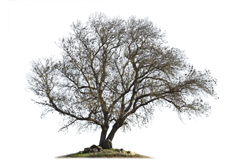Improving ash tree genetic resources for sustainability
The RAP project was concerned with testing and promoting improved genetic resources of the ash tree (Fraxinus excelsior). This project is in line with the European strategy for sustainable development, which set as a priority to support the sustainability of forests. The project partners focused on deriving knowledge on the genetic background of ash, identifying pure species and hybrid populations. This knowledge can be used to help formulate conservation management practices. Helping to identify the optimal use of ash has other environmental benefits including making forestation of this tree compatible with sustainable systems of production. This in turn could lower the EU's dependence upon tropical hardwoods. A European ash provenance trial was established in France, where it grows naturally in rich soils with good water content. A 'core collection' of 33 provenances common to all the partners involved in the task were identified. Data analysis showed very important differences exist between the provenances. These differences were ranked. In the nursery growing phase, two Narrow-leaved Ash provenances were compared with Common Ash provenances as a control of specific purity. The data results following seven year old provenance-progeny testing revealed that variability between progenies within provenances is very important in comparison with variability between provenances for all the characters under study. Data following a 10 year commercial provenance test revealed that the hybrid provenances performed badly in general. Also, five registered provenances were characterised for growth characters; stem straightness, flushing, number of forks and steep branches.







